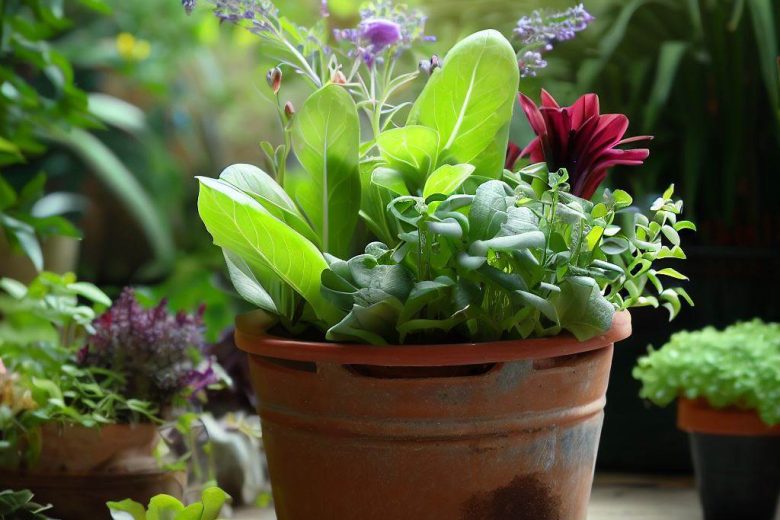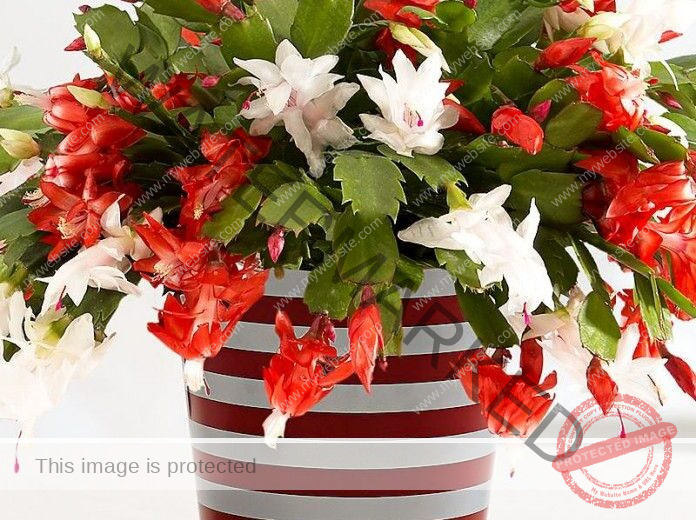Choosing the right pot for your snake plant (Sansevieria) is crucial for its health and growth. While these plants are known for their resilience and low-maintenance nature, the pot you choose can significantly impact their well-being. The right pot ensures proper drainage, root health, and stability for your plant, allowing it to thrive in various conditions. In this guide, we will explore the key factors to consider when selecting a pot for your snake plant, including material, size, and drainage capabilities.
Understanding the needs of your snake plant is the first step in selecting the perfect pot. Snake plants prefer well-draining soil and are prone to root rot if they sit in water for too long. Therefore, a pot with adequate drainage holes is essential. Additionally, the pot size should accommodate the plant’s growth without restricting it, allowing the roots to expand and support the plant’s upward growth.
Beyond functionality, the aesthetic aspect of the pot is also important. The pot should complement your home decor while providing a stable base for your plant. With a wide range of materials and designs available, it can be overwhelming to choose the best pot for your snake plant. This comprehensive guide will help you make an informed decision, ensuring your snake plant not only survives but thrives.
Pot Material: Which is Best for Snake Plants?
When choosing a pot for your snake plant, the material plays a significant role in its health and maintenance. Different materials offer various benefits and drawbacks, impacting factors like moisture retention, weight, and durability. Here, we will discuss the most common pot materials and their suitability for snake plants.
Terracotta Pots
Terracotta pots are a popular choice for snake plants due to their porous nature, which allows for excellent air circulation and prevents root rot. The porous material absorbs excess moisture, helping to keep the soil dry. However, terracotta pots can be heavy and may crack over time, especially in colder climates. They are ideal for indoor use and provide a rustic, natural look that complements the aesthetic of snake plants.
Ceramic Pots
Ceramic pots are another excellent option for snake plants. They come in a variety of designs and colors, making them a versatile choice for home decor. Ceramic pots are typically glazed, which can affect their drainage capabilities. It’s essential to choose ceramic pots with drainage holes to prevent water from accumulating at the bottom. These pots are generally heavier than plastic ones, providing stability for larger snake plants.
Plastic Pots
Plastic pots are lightweight, affordable, and available in various sizes and styles. They retain moisture longer than terracotta or ceramic pots, which can be beneficial in drier climates. However, they may not provide the same level of air circulation, potentially leading to root rot if overwatering occurs. Ensuring that plastic pots have adequate drainage holes is crucial. They are a good choice for beginners or those who frequently move their plants.
Metal Pots
Metal pots offer a modern and sleek look, suitable for contemporary home decor. However, they can heat up quickly in direct sunlight, potentially harming the roots of your snake plant. Additionally, metal pots may rust over time, especially if exposed to moisture. They are best used as decorative outer pots with a more functional inner pot that provides proper drainage and temperature control.
Wooden Pots
Wooden pots can add a natural and earthy touch to your plant display. They are typically well-insulated, providing a stable temperature for your snake plant’s roots. However, wooden pots can decay over time, especially if they are not treated or lined properly. Using a plastic or metal liner can help extend the lifespan of a wooden pot. Ensure the wooden pot has drainage holes to prevent waterlogging.
Pot Size: Finding the Perfect Fit
The size of the pot is another crucial factor to consider when planting your snake plant. A pot that is too small can restrict root growth, while a pot that is too large can lead to overwatering and root rot. Here are some guidelines to help you choose the right pot size for your snake plant.
Small Pots
Small pots, typically 4-6 inches in diameter, are suitable for young or smaller snake plants. They are easy to manage and require less soil, which can dry out more quickly, reducing the risk of overwatering. However, as the snake plant grows, it will need to be repotted into a larger pot to accommodate its expanding root system.
Medium Pots
Medium pots, ranging from 6-10 inches in diameter, are ideal for moderately sized snake plants. They provide enough space for the roots to grow while still being manageable in terms of weight and mobility. These pots are a good balance between size and practicality, offering adequate drainage and room for growth.
Large Pots
Large pots, typically over 10 inches in diameter, are suitable for mature snake plants or those with multiple shoots. They provide ample space for root expansion and can support the plant’s height and weight. However, large pots can retain more moisture, increasing the risk of overwatering. Ensure that large pots have sufficient drainage holes and use a well-draining soil mix to maintain healthy roots.
Choosing the Right Pot Size
When selecting a pot size, consider the current size of your snake plant and its growth potential. A good rule of thumb is to choose a pot that is 1-2 inches larger in diameter than the current pot. This provides enough room for growth without overwhelming the plant with too much soil. Repotting every 2-3 years can help refresh the soil and provide more space for the roots.
Drainage: The Key to Healthy Snake Plants
Proper drainage is essential for maintaining the health of your snake plant. Without adequate drainage, water can accumulate at the bottom of the pot, leading to root rot and other issues. Here are some tips to ensure your snake plant has the proper drainage it needs.
Importance of Drainage Holes
Drainage holes at the bottom of the pot allow excess water to escape, preventing waterlogging and root rot. Always choose pots with drainage holes, regardless of the material. If your preferred pot does not have drainage holes, consider drilling them yourself or using it as a decorative outer pot with a functional inner pot that provides proper drainage.
Using a Well-Draining Soil Mix
A well-draining soil mix is crucial for preventing excess moisture from accumulating around the roots. A good mix for snake plants includes equal parts potting soil, perlite, and sand. This combination provides adequate aeration and allows water to flow through the soil easily. Avoid using heavy, clay-based soils that retain moisture and can lead to root rot.
Adding a Layer of Gravel or Pebbles
Adding a layer of gravel or pebbles at the bottom of the pot can help improve drainage. This creates a space for excess water to collect away from the roots, reducing the risk of root rot. However, this method should not replace proper drainage holes but can be used in conjunction with them for added protection.
Monitoring Watering Frequency
Overwatering is a common issue with snake plants, leading to root rot and other problems. Allow the soil to dry out completely between waterings, and adjust the frequency based on the pot size and material. Terracotta pots, for example, may require more frequent watering than plastic pots due to their porous nature.
Other Areas that Relate to This Topic
Repotting Your Snake Plant
Repotting your snake plant is necessary when it outgrows its current pot or the soil becomes depleted. Signs that your snake plant needs repotting include roots growing out of the drainage holes, slow growth, and the plant becoming top-heavy. Choose a pot that is 1-2 inches larger in diameter and use fresh, well-draining soil. Gently remove the plant from its current pot, shake off excess soil, and place it in the new pot, filling in around the roots with fresh soil.
Decorative Pot Covers
While functionality is key, aesthetics also play a role in choosing a pot for your snake plant. Decorative pot covers can enhance the appearance of your plant and complement your home decor. These covers can be made of various materials, including wicker, ceramic, and metal. Ensure that the inner pot has proper drainage and that the cover does not trap excess moisture.
Seasonal Considerations
Seasonal changes can affect the watering needs and overall care of your snake plant. In winter, snake plants enter a dormant period and require less water. Adjust your watering schedule accordingly and ensure that the plant is not exposed to cold drafts. In summer, the plant may need more frequent watering and protection from direct sunlight, which can scorch the leaves.
Benefits of Snake Plants
Snake plants are not only easy to care for but also offer numerous benefits. They are known for their air-purifying qualities, removing toxins such as formaldehyde, benzene, and trichloroethylene from the air. Additionally, snake plants are low-maintenance and can thrive in low light conditions, making them ideal for indoor environments. Their unique vertical growth and architectural leaves add a touch of elegance to any space.
Conclusion
Selecting the best pot for your snake plant is a crucial aspect of its care. By considering the pot material, size, and drainage capabilities, you can provide an optimal growing environment that supports the plant’s health and growth. Whether you opt for terracotta, ceramic, plastic, metal, or wooden pots, ensuring proper drainage and adequate space for root expansion is key. Additionally, balancing functionality with aesthetics allows you to create a visually pleasing display that complements your home decor. Regular monitoring and adjusting your care routine based on seasonal changes will help your snake plant thrive, offering not only beauty but also air-purifying benefits to your living space.
FAQs
What type of pot is best for snake plants?
Terracotta pots are often recommended for snake plants due to their porous nature, which allows for better air circulation and prevents root rot. However, ceramic and plastic pots with proper drainage holes are also good options.
How often should I repot my snake plant?
Snake plants typically need to be repotted every 2-3 years. Signs that your plant needs repotting include roots growing out of the drainage holes, slow growth, or the plant becoming top-heavy.
Can I use a decorative pot without drainage holes for my snake plant?
While decorative pots without drainage holes can be used, it’s essential to use them as outer covers. Place your snake plant in a functional inner pot with drainage holes and then place it inside the decorative pot to ensure proper water drainage.
What size pot should I choose for my snake plant?
Choose a pot that is 1-2 inches larger in diameter than the current pot to provide enough room for root growth. Small pots are suitable for young plants, while medium and large pots are ideal for mature plants.
How can I improve drainage if my pot doesn’t have enough holes?
If your pot lacks adequate drainage holes, you can drill additional holes yourself or place a layer of gravel or pebbles at the bottom of the pot to create a space for excess water to collect away from the roots. However, proper drainage holes are the best solution.




